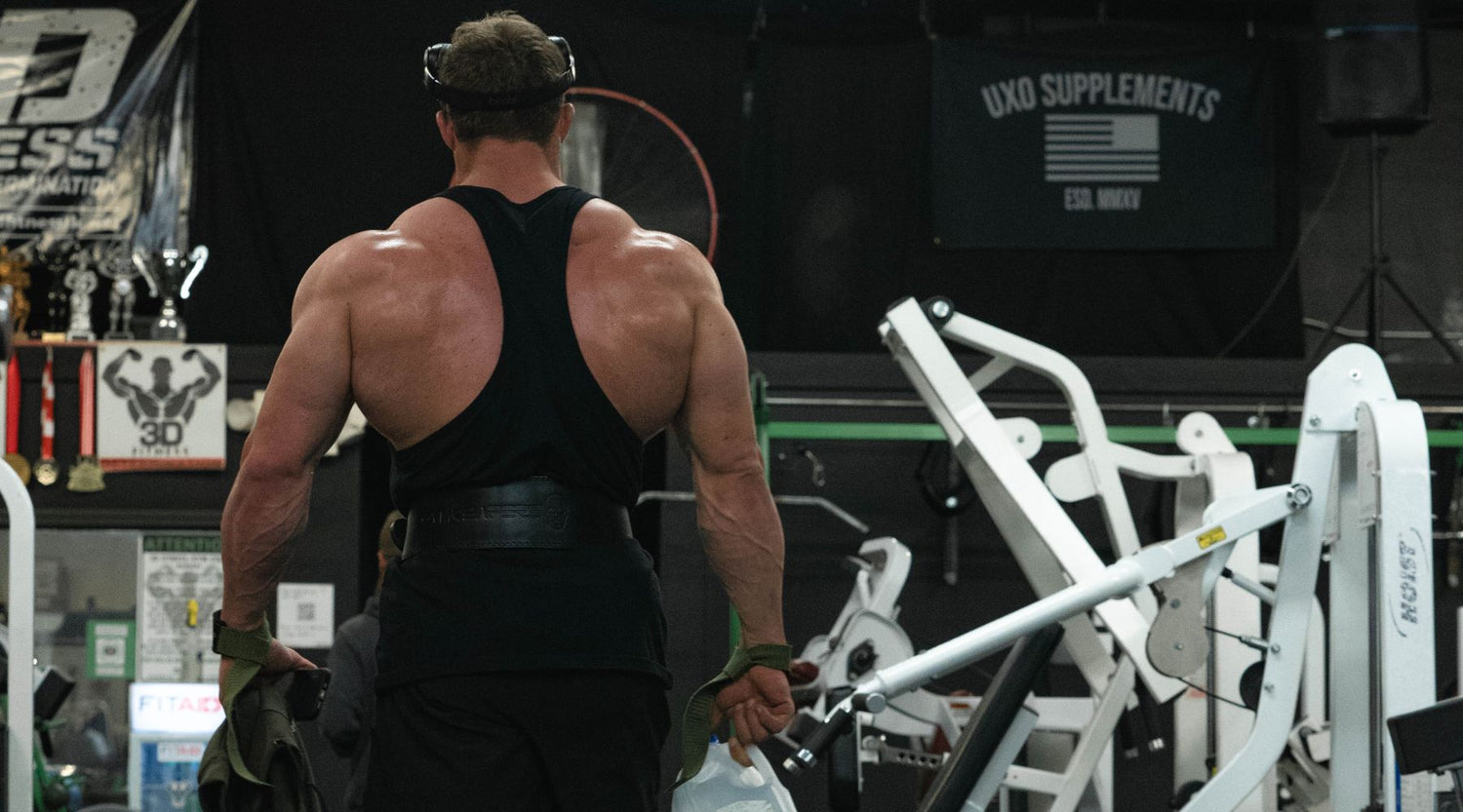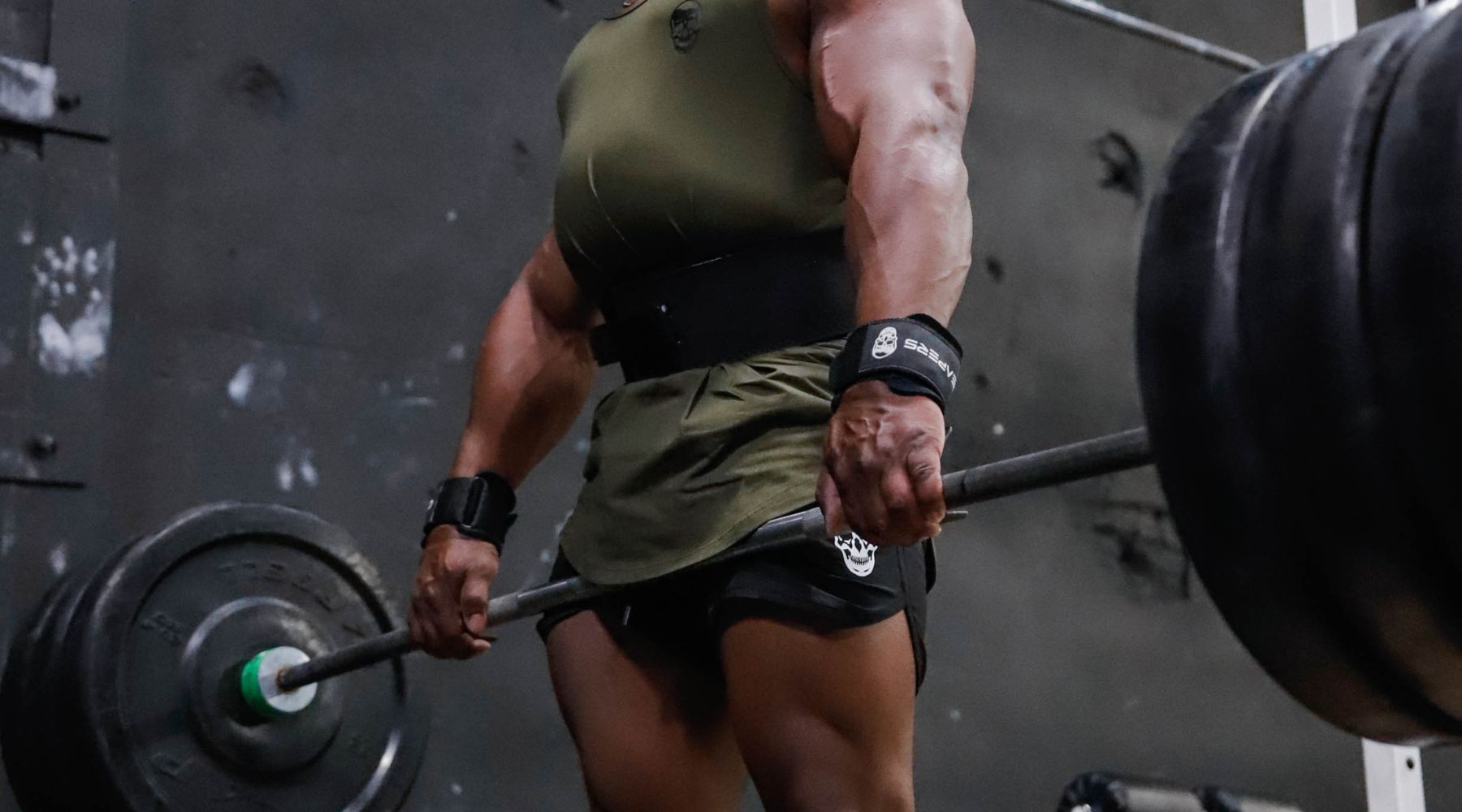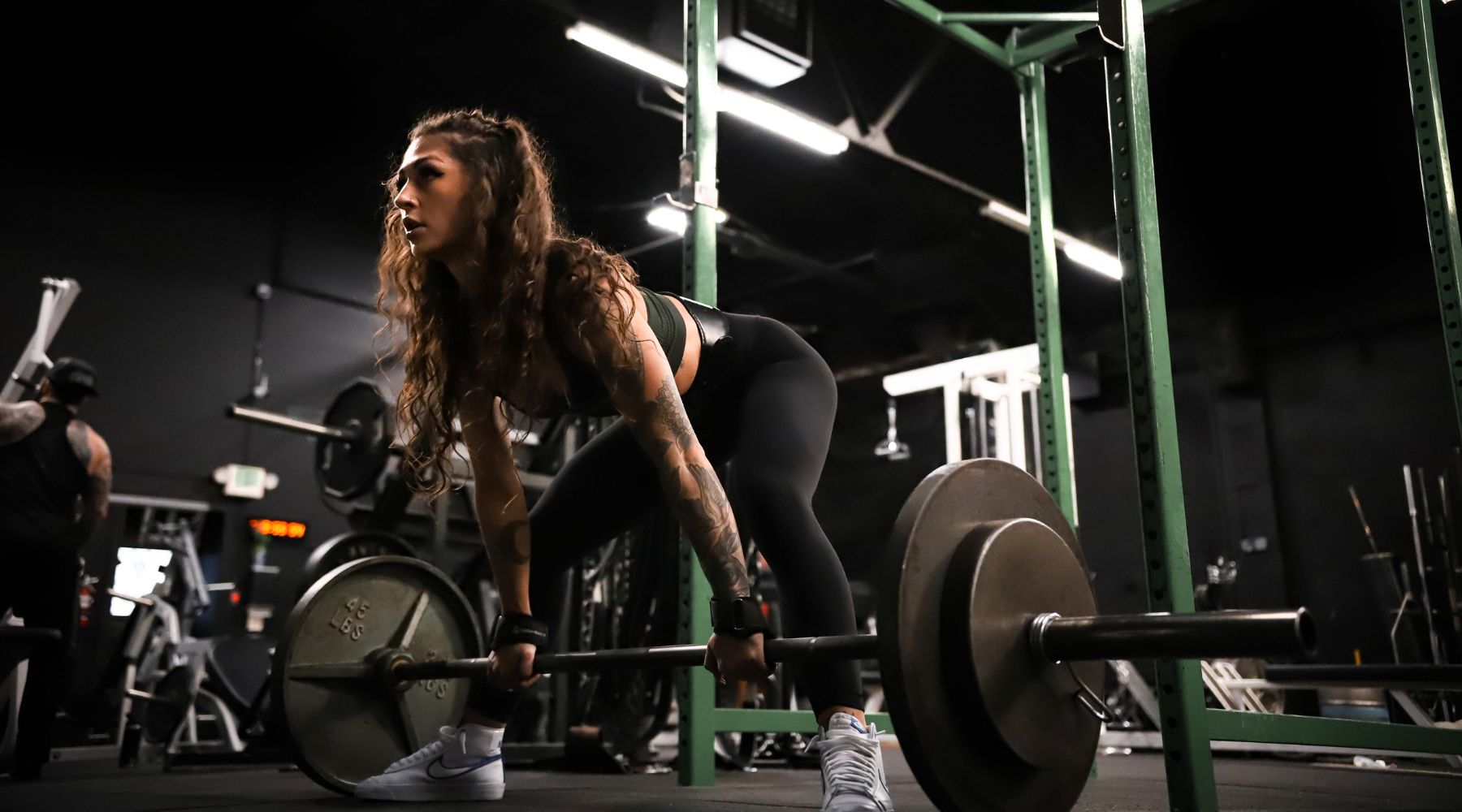As a big guy aspiring to get as strong as possible and stay safe, you recognize the importance of a good lifting belt. Unfortunately, finding a belt your size can be a frustrating experience.
When choosing your belt, the primary criteria to be mindful of are its width, thickness, waist size range, the material used, and adjustability options. The best lifting belts for bigger guys are long enough to wrap around the midsection, thick and wide enough to provide midsection support, and competition approved (if you’re training for a sport).
This article covers everything you need to know about picking the right belt as a bigger lifter to get your money’s worth and save yourself from potential frustration at the gym.
Key Takeaways
- The ideal lifting belt width for bigger guys is 4”. That’s the maximum allowed width for a belt in powerlifting and covers enough of the midsection to provide torso support.
- The two primary thickness options are 10mm and 13mm. As a big guy, 13 mm could offer additional support without causing much midsection discomfort.
- Picking the correct lifting belt as a big guy can be tricky, as there are several things to consider. Pay careful attention to the details to get the right belt and make the most of it.
Lifting Belt Criteria For Big Guys

Width
As a bigger guy, 4” is likely to be the ideal width.
This is the maximum allowed width for a belt in powerlifting competitions and is what 99 percent of competitors use.
Regardless if you compete or not, a bigger guy shouldn’t be using a belt that is smaller than 4-inches.
The belt covers a decent percentage of the midsection and provides excellent support for heavy training.
Thickness
As a big guy, the two primary thickness levels to consider are 10 mm and 13 mm.
Thicker belts are more rigid, take longer to break in, and feel more uncomfortable, but they are also more supportive and could provide an extra edge in the gym and during competitions.
Having some midsection padding would allow you to use the 13 mm belt and get the most out of it without experiencing much discomfort, especially after the break-in period.
Waist Size Range
You should pick a belt big enough to wrap around your midsection perfectly, which means looking at the XL, XXL, and 3XL options.
Here are some sizing guidelines:
- XL - 36-38” to 46”
- XXL - 39-41” to 48”
- 3XL - 42-43” to 52”
These could vary between manufacturers, so always double-check before placing an order.
Material
The best lifting belts for big guys are made of leather because they are the most durable and provide the best midsection support for heavy training.
In contrast, fabric belts are more flexible but less supportive or durable than leather.
Adjustability
Good lifting belts come with several adjustment options. The closer the holes are, the more options you have for finding the perfect fit in every situation.
Sturdiness/Durability
As mentioned previously, leather is the most durable material that provides the necessary rigidity to support your midsection during heavy training.
Soft leather and nylon belts can also be an option, but these would be more useful for overweight beginners who don’t plan to squat and deadlift hundreds of pounds for now.
Competition Approved
So long as you pay attention to the above criteria, you’re not likely to have any issues during competition. But, to be on the safe side, check if the belt you want to use is approved. For instance, the 10 mm single-prong belt by Gymreapers is IPF and USAPL approved.
The Impact of a Larger Waist On Belt Fit

The belt you choose should be the correct size to fit around your waist and not be too small or large. Ideally, you would be able to get a snug fit while using one of the middle holes, but that isn’t mandatory.
For example, if you’re using a prong buckle belt, the ideal scenario is using the middle holes to get the perfect fit around your midsection. That would mean the belt provides room for your waistline to grow or get smaller and still fit perfectly.
The simplest way to determine what size belt you should get is to measure your waist. Here’s how:
- Get a tape measure.
- Wrap the tape tightly around your midsection (navel level or slightly higher).
Don’t suck your stomach in; simply stand tall and measure in a relaxed state. Measure with a T-shirt on to ensure the most accurate value since most people wear a single layer of clothing during their training (tank top, T-shirt, etc.)
For instance, an XL will probably be best if your waist is between 38 and 44”, but you might want to consider a 2XL if your midsection is closer to 46”.
Double-check the size before placing an order because there are slight differences between manufacturers.
- Related Article: What Lifting Belt Does Brian Shaw Use?
Factors to Consider When Choosing A Lifting Belt Based On Certain Activities & Lifts
There are two primary ways to pick a belt as a big guy, depending on where you are now and what type of training you prefer.
First, we have the big and strong powerlifters who routinely throw around hundreds of pounds and need midsection support to perform at their best and reduce the injury risk. In that case, a traditional lifting belt will do the job, and you should consider the criteria discussed above.
Second, we have the big guys who are just getting started with weight training and aren’t going to lift that much weight, at least for the time being. In such a scenario, a rigid lifting belt might not be necessary.
A traditional 10 or 13-mm belt requires skill to use effectively and often does more harm than good for new lifters.
Big guys new to the gym would be better off with a more flexible belt, such as those made of soft leather or fabric. Such a belt would provide some degree of midsection support without feeling as intrusive. It would also be suitable for more gym activities, not just the heaviest sets on compound lifts like squats and deadlifts.
Top 3 Lifting Belts For Bigger Guys
1. Gymreapers 10MM Lever Belt

The 10 mm lever belt by Gymreapers is a fantastic option for most lifters. It uses a lever system to lock in position, which allows you to quickly put the belt on and take it off after a heavy set.
Its width is 4”, which is ideal for most people, and the belt is USAPL and IPF-approved.
The three biggest sizes are:
- L - 34 to 41”
- XL - 38 to 45”
- 2XL - 39 to 46”
Pros:
- Put on and take off in just a few seconds
- Eight color options, including black, gray, and military green
- One-year replacement guarantee by Gymreapers
Cons:
- You need a screwdriver to adjust the lever
2. Gymreapers 10MM Single Prong Belt

For people who aren’t fans of lever belts, Gymreapers offer a 10 mm single-prong belt. One great benefit of such a belt is that you can easily adjust the belt tightness during your training without needing a screwdriver.
The belt is 4” wide, competition approved, and available in seven colors: midnight camo, white camo, and more.
The XL is 39 to 46”, and the 2XL is 41 to 48”, which is slightly more than what you get with the lever belt.
Pros:
- Greater flexibility to adjust the tightness during training
- One-year warranty that covers any material defects
- Made of high-quality leather
Cons:
- It takes slightly longer to put on and take off than a lever belt
3. Gymreapers 13MM Lever Belt

Gymreapers offer a 13-mm lever belt for the big guys looking to challenge themselves hard. The three extra millimeters of thickness provide additional midsection support that can translate to better performance and greater safety.
Similar to the other belts, this one is also available in XL and 2XL, which is enough to cover most big guys’ needs.
Additionally, the belt is IPF and USPA-approved. It is also built to last a long time thanks to the high-quality leather used.
Pros:
- Put it on and take it off in seconds
- Greater midsection support
- Reinforced stitching for excellent durability
Cons:
- You need a screwdriver to adjust the lever
- It might take slightly longer to break in
How To Properly Wear A Lifting Belt When You’re A Bigger Guy
Step 1: Position It
Wrap the lifting belt around your midsection. Begin at the navel and tweak the position if necessary to find what works best.
For example, you can wear it at the navel for squats but slightly higher for deadlifts to prevent it from affecting your starting position.
Step 2: Tighten It
Once you’ve wrapped the belt around your midsection, tighten it to the point where it fits just right. You should be able to take a deep breath and push your stomach against the belt for optimal stability.
Don’t suck your stomach in to tighten the belt extra hard. Doing so will only cause bruising and impact your performance.
Step 3: Breathe & Brace
Set yourself up in position for your movement, take a deep mouth breath to push your belly against the belt, and squeeze your abs. Perform your repetition while maintaining that tightness and exhale near the end of the rep.
What Benefits Will A Lifting Belt Have For A Bigger Individual?

1. Improved Intra-Abdominal Pressure (IAP)
Improved intra-abdominal pressure is not just beneficial for bigger guys wearing a lifting belt, but it is still an advantage worth mentioning.
A lifting belt works by wrapping around your midsection and compressing your abdominal region, leading to a more rigid torso. How big of an improvement you can experience depends on several factors, including what movements you’re doing and how skilled you are with a belt.
According to some data, a belt can increase IAP by as much as 40 percent.
2. Spinal Support
Superior spinal support results from higher IAP and potentially stronger erector spinae activation.
First, higher abdominal pressure leads to a more stable position and keeps your spine in place, even during more dynamic movements. Second, some research suggests that a lifting belt can increase erector spinae activation. The muscle group’s primary function is to extend the back and keep it stable.
With that said, a traditional lifting belt isn’t always necessary. You should only use one when handling weights close to your maximum on compound lifts like the squat and deadlift.
“Unless you're performing heavy load exercises that involve stabilization through the lower back musculature, there is no reason to wear a lifting belt.”
3. Puts Your Mind At Ease
As a big guy, you can probably handle more weight than the average gym-goer. But while experience builds confidence, it can sometimes be challenging to look at a barbell with 600 lbs loaded and think, “I can totally do 5 reps here.”
A belt could provide an extra edge and put your mind at ease, allowing you to tackle heavy weights and push for progressive overload more confidently.
Frequently Asked Questions
Can You Be Too Fat For A Lifting Belt?
The largest lifting belt size is 3XL, typically covering up to 52” (132 cm). That should be enough for even the biggest of big guys.
With that said, if your waist is over 52”, you might struggle to fit inside a lifting belt.
How Wide Should A Lifting Belt Be For A Big Guy?
The ideal lifting belt width for big guys and most other lifters is 4”. This is the maximum allowed width in powerlifting and is enough to cover the midsection to a degree and provide the necessary support.
Learn More: 7 Types of Lifting Belts Explained













Leave a comment
All comments are moderated before being published.
This site is protected by hCaptcha and the hCaptcha Privacy Policy and Terms of Service apply.